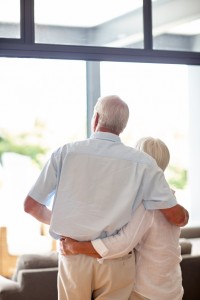 For a growing number of aging Americans who are no longer quite as capable as they once were of getting around without assistance, or of completing everyday activities without help, the idea of moving into a senior care facility simply doesn’t sound appealing.
For a growing number of aging Americans who are no longer quite as capable as they once were of getting around without assistance, or of completing everyday activities without help, the idea of moving into a senior care facility simply doesn’t sound appealing.
Instead, they would rather remain in the homes in which they’ve spent their adult lives. Homes that are familiar, and where they feel comfortable and safe. Homes, in many instances, with mortgages that have long ago been paid off.
So many older Americans, in fact, have begun choosing to remain in their homes regardless of their ability to adequately look after themselves that a phrase has been coined for the trend. It’s known as “aging in place.”
According to the Centers for Disease Control (CDC), aging in place is nothing more than “the ability to live in one’s own home and community safely, independently, and comfortably, regardless of age, income, or ability level.”
A senior who chooses to age in place, in other words, is a person who hasn’t yet given up on life. This is a person, you might say, who is confident that he or she can overcome any obstacles that may appear during the quest to continue living a happily fulfilled and well-rounded life.
If that sounds like you, or like someone you love, we have good news: There are any number of simple and affordable home modifications that can make any house a safer and more welcoming place for people with mobility issues, vision problems, or nearly any other impediment that tends to be common in old age.
Here are just a few ideas for transforming a non-accessible home into a place where you or your aging relatives can age in place without constant fear of injury.
Look for Tripping Hazards
According to the CDC, falling is the most common cause of injury for seniors who choose to age in place. Because the average home presents untold opportunities for trips and spills, pinpointing those and then preventing them should be your top priority. Look for loose throw rugs and carpets that tend to slide. Take a close look at the most frequently used pathways in the home, and around all doors and entranceways, to make sure there are no unnecessary obstructions, such as piles of laundry or stacks of books.
Make Communication Simple
For seniors with severe mobility issues, home modifications can be rather expensive. But one affordable preventive measure involves keeping telephones—preferably landlines—in every frequently used room, in case someone anyone needs to call for help. If more than one person is living in the home, installing an intercom system can also be useful.
Always Modify the Bathroom
Shower and/or bathtub modifications are a must. If you can afford to have a walk-in shower installed, definitely do so. Otherwise, simply adding a chair or bench inside your shower (make sure it won’t slip or slide) can be helpful. Such a modification, of course, will also require the addition of a hand-held showerhead, many of which are relatively inexpensive.
Allow for Sitting in the Kitchen
Standing for long stretches of time in the kitchen can lead to falls. Consider purchasing a kitchen island with a sizable countertop, along with a few high-backed bar stools. That way, meals can be prepared while sitting. (The same effect can also be achieved by removing some of your kitchen’s existing shelves or drawers.)
Ramps, Rails and Stair Lifts
In most homes where seniors aging in place reside, adding a number of rails and ramps will be a necessity. Even for seniors who don’t use wheelchairs, ramps leading up to the home’s entrance can be a big help. Buying or renting a stairlift, of course, can be a lifesaver, especially for aging in place seniors who live in homes with multiple floors and basements. Adding rails and grab bars in places such as the bathrooms, where slips can easily occur, should also be on your home modification task list.
* * * * * * *
There are so many different ways a home can be modified to become a safer and more comfortable place for seniors. The possibilities, of course, are nearly endless.
♦ For seniors with visibility issues, adding lighting in closets, in the kitchen’s cooking areas, and on staircases will lessen the chance of injury.
♦ Modifying appliances for seniors who may need to sit in a chair while operating them can also be wise, albeit expensive.
♦ And if you’re really not sure what your next home modification steps should be—perhaps you’re still not clear on what your first steps should be—remember that help is available. It’s possible to have a certified aging-in-place specialist examine your home and give recommendations. An occupational therapist can visit your home and offer suggestions as well.

